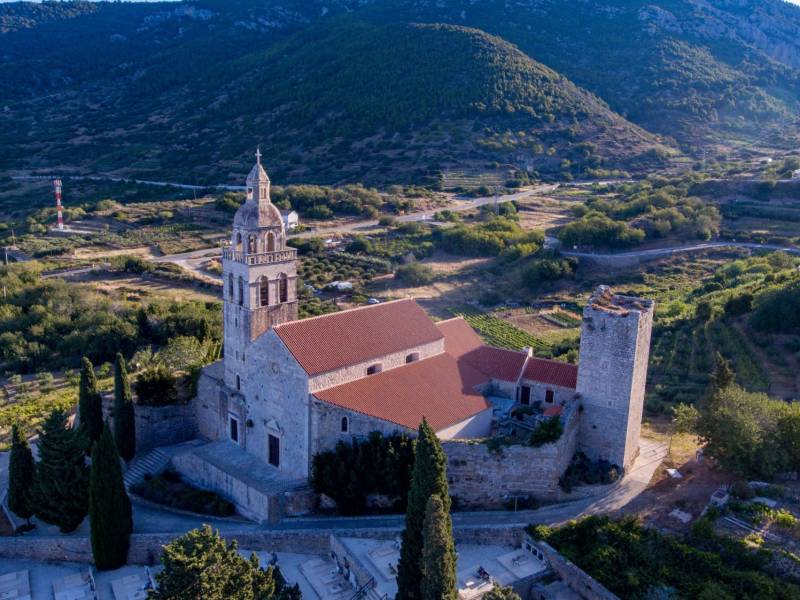Church of the Holy Spirit
The Church of the Holy Spirit is located on the highest peak of the island of Vis – Hum Hill, at an altitude of 560 meters above sea level. It is one of the smallest and simplest churches on the island, which, with its modest appearance, with a narrow door and two small windows, is more reminiscent of a field house than a sacred building. The only stylistic feature it bears is the Gothic vault, which is why it is assumed to date from the 15th century, although it is possible that it was created later, because the stylistic features were often retained even after the official end of the era. The importance of this church is evidenced by records from the 17th and 18th centuries. Bishop Milani, in his visit in 1650, recorded that it had been visited in processions “since ancient times”. Don Antun Matijašević Karamaneo in 1716 describes how on Whit Tuesday believers from all over the island gathered at the church: after the mass, the blessing of the fields was held, and then they continued towards Dračevo polje and Vis, where the rituals were repeated in several places. On the same day, the people of Komiža also made a pilgrimage to Hum, which shows how much the church had a common meaning for the entire island.
During the Austrian rule in the 19th century, it was occasionally forbidden to perform religious rituals there, but the tradition has been preserved to this day. Today, mass is held in the Church of the Holy Spirit once a year – on the feast of Pentecost, fifty days after Easter.
In addition to its religious significance, the location of the church also attracts many visitors due to its location. Right next to it is an airstrip for paragliders, and from the road to Hum, you can reach Tito's Cave, the former headquarters of the Supreme Headquarters of the Partisan Army, by taking stone steps.
Audio guides available in:English (British), Italiano, Hrvatski











